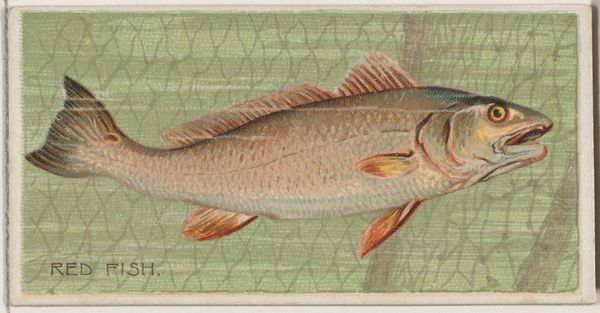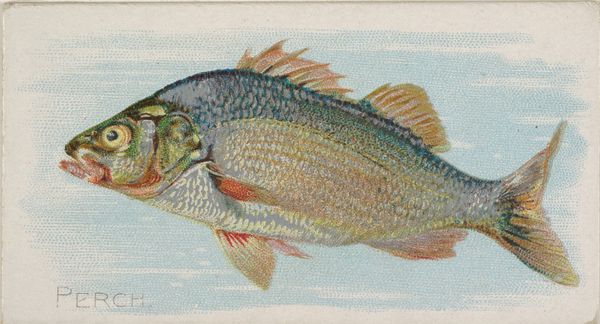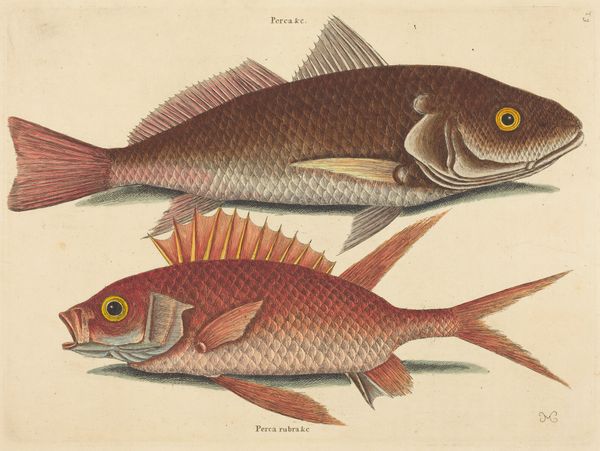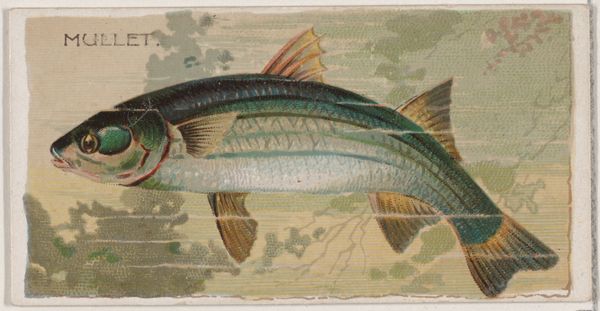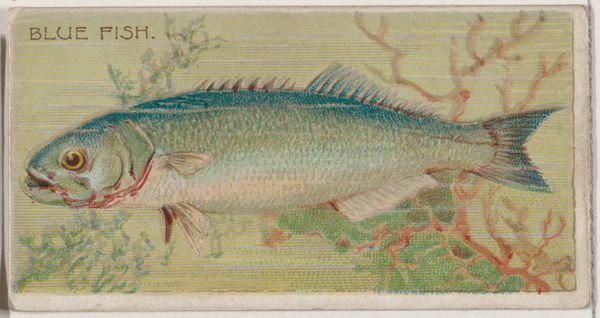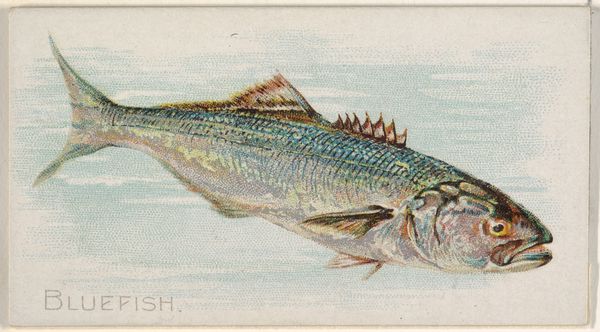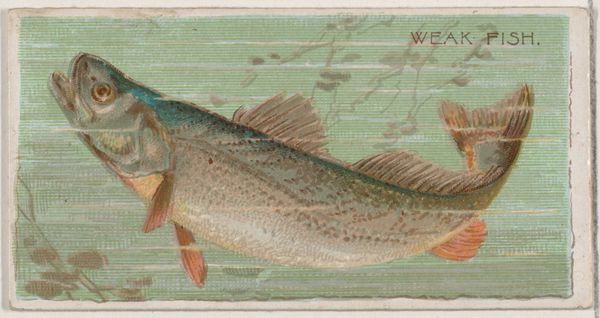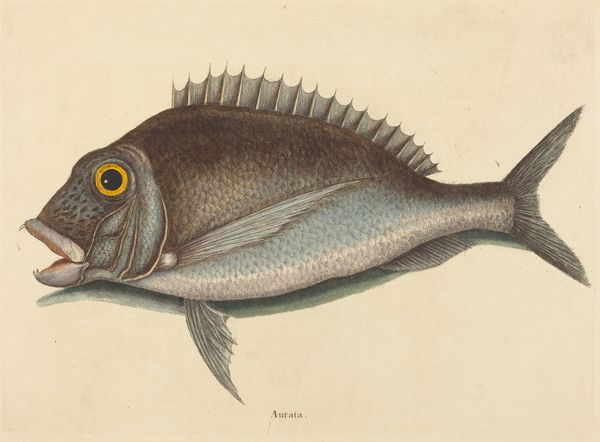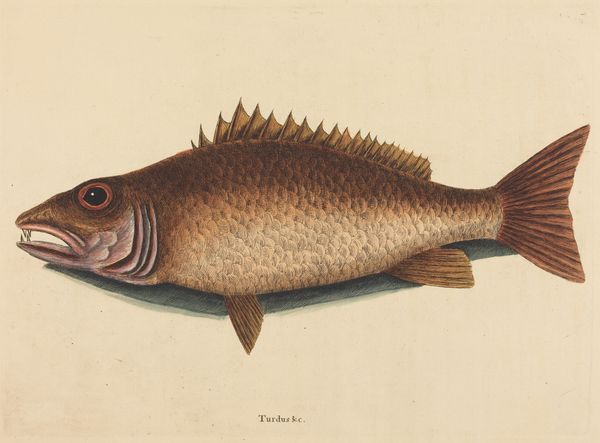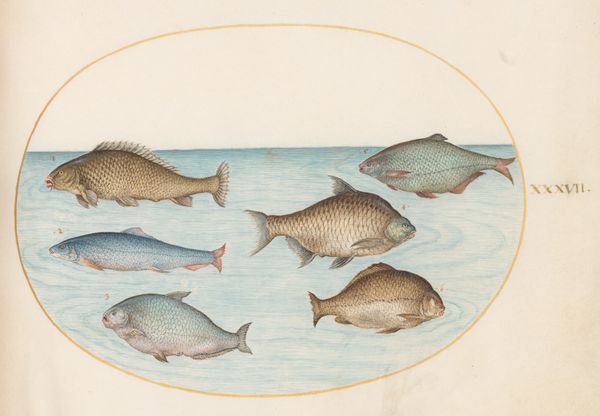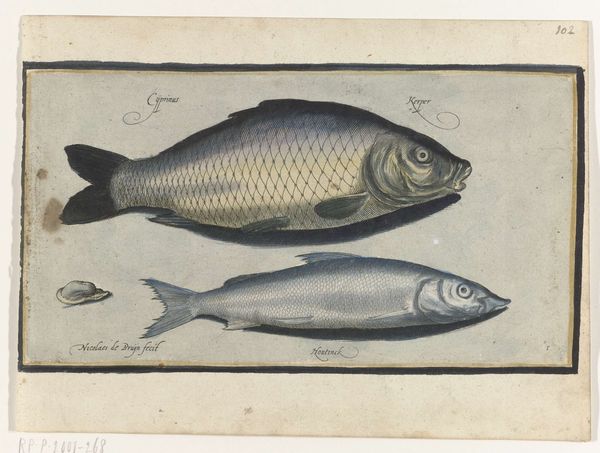
Copyright: Public domain
Editor: This is "American Brook Trout," a lithograph and aquatint print from 1872 by Currier and Ives. It’s quite a striking image; the silvery trout are layered so carefully in the foreground. How do you interpret this work? Curator: Formally, the composition exhibits a compelling interplay between foreground and background. The cluster of trout, meticulously rendered, provides a focal point, while the landscape elements create depth. Note the contrast in textures: the smoothness of the fish scales against the implied roughness of the foliage. Editor: That's interesting, I didn’t consider the textures. How do you see that contrast functioning within the piece? Curator: It functions to heighten visual interest and underscore the tactile qualities of the depicted subject matter. The layering of the fish, how they overlap and recede, directs the eye. Consider also the use of light and shadow to define form and volume, and how the graphic arrangement contributes to the overall design. Editor: I see what you mean. I was drawn to the sort of illustrative qualities of the Hudson River School; but looking closely, this detailed analysis does let you notice how the components interact. Curator: Precisely. By analyzing the formal elements of the print, we can discern how Currier and Ives construct not just a representation, but an artistic arrangement intended for aesthetic contemplation. The strategic design amplifies its essence. Editor: That really changed how I see it; I wasn't even considering that interplay and just assumed that it was just an illustration! Curator: Understanding formal composition enables a deeper understanding, moving past mere observation to appreciate intentional design.
Comments
No comments
Be the first to comment and join the conversation on the ultimate creative platform.
